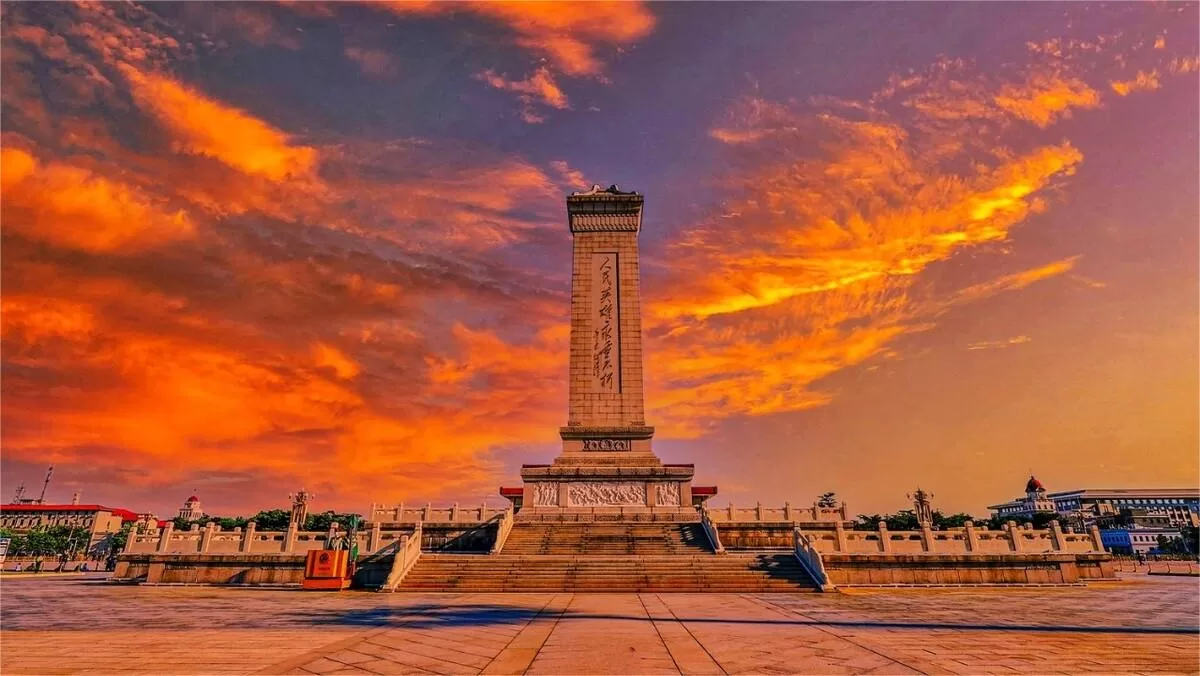The Monument to the People’s Heroes, located in Beijing, China, is a significant landmark that commemorates the revolutionary struggles and sacrifices made by the Chinese people throughout history. It stands in the southern part of Tiananmen Square, one of the world’s largest public squares and a symbol of Chinese national identity. The monument holds immense historical and cultural importance, serving as a symbol of patriotism, resilience, and the indomitable spirit of the Chinese people.
Designed by the renowned Chinese architect Liang Sicheng and completed in 1958, the Monument to the People’s Heroes is a towering obelisk-like structure that reaches a height of approximately 37.94 meters (124.5 feet). It consists of white marble from the nearby Fangshan District, reflecting the classical architectural influences of ancient China.
The monument is composed of three main sections: the pedestal, the body, and the summit. The pedestal is square-shaped and features intricate carvings depicting various scenes from Chinese history, including key revolutionary events and figures. These carvings are highly detailed and showcase the struggles and victories of the Chinese people over the centuries.
Ascending from the pedestal is the body of the monument, which tapers towards the top. The front and back of the body are adorned with reliefs that depict significant historical events, such as the May Fourth Movement in 1919 and the Chinese Civil War. These reliefs are sculpted with precision and capture the energy and determination of the individuals who fought for the country’s liberation.
At the summit of the monument is a large star, symbolizing the Communist Party of China and the unity of the Chinese people. The star is surrounded by radiating flames, representing the eternal spirit of the heroes being honored. Inscribed on the front of the monument, in bold gold characters, are the words “Eternal Glory to the People’s Heroes” in both Chinese and English.
The Monument to the People’s Heroes is not only a physical structure but also serves as a gathering place for important national events and ceremonies. It has witnessed numerous significant moments in Chinese history, including political rallies, military parades, and public commemorations. Each year, on National Day (October 1st) and other significant anniversaries, the monument becomes a focal point for celebrations and tributes to the heroes it represents.
The monument’s location in Tiananmen Square, a site of historical importance and political significance, further enhances its significance. It stands as a reminder of the struggles and sacrifices made by the Chinese people in their quest for independence, equality, and national rejuvenation.
The Monument to the People’s Heroes continues to be a revered symbol of Chinese patriotism and a testament to the country’s rich history. It attracts countless visitors, both domestic and international, who come to pay their respects, learn about Chinese history, and reflect upon the extraordinary journey of the Chinese nation.


